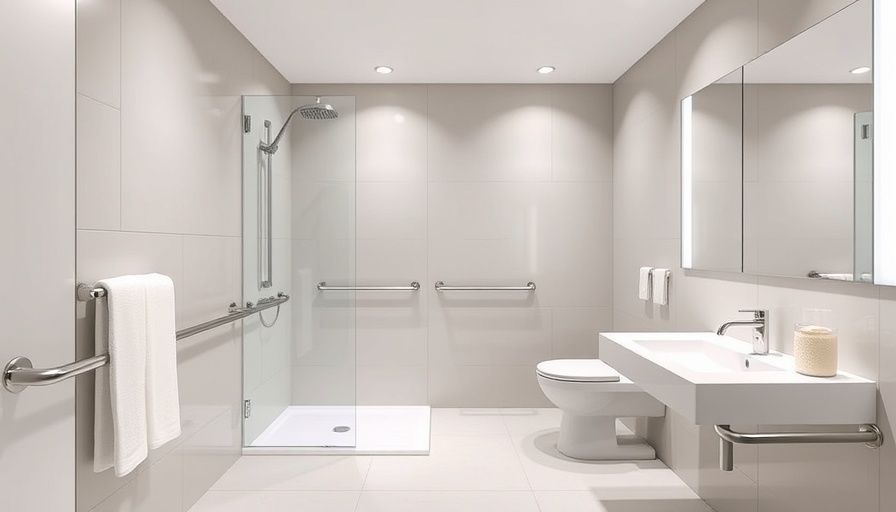
Creating a Sanctuary: The Importance of an Arthritis-Friendly Bathroom
As the population ages, more individuals are facing the daily challenges posed by conditions like arthritis. With one in four adults with arthritis reporting severe pain, rethinking how we design our living spaces becomes increasingly crucial. A key area needing attention is the bathroom, often the least equipped space for those experiencing mobility issues. An arthritis-friendly bathroom not only enhances comfort and safety but can also promote a sense of independence, enabling users to carry out personal care tasks with confidence.
Smart Layout Design: A Foundation for Safety
The layout of a bathroom plays a foundational role in accessibility. For elderly homeowners or caregivers, efficient navigation helps in reducing the risk of falls, a leading concern among those living with arthritis. Ideally, bathrooms should allow for at least 36 inches of clearance between fixtures, providing ample room for easy movement, especially when behavioral aids are involved. Removing excess furniture or decorative items can help create unobstructed pathways.
Incorporate storage solutions that place daily necessities like soap and towels within arm’s reach, eliminating the need for awkward stretching or bending. Wall-mounted shelves or shower caddies can assist in keeping items organized at an accessible height, while non-slip rugs can offer additional security on wet surfaces.
Equipping Bathrooms with Supportive Fixtures
Fixtures that provide reliable support can make all the difference in an arthritis-friendly bathroom. Strategically positioned grab bars near the tub, shower, and toilet can empower individuals to maintain balance as they move through these spaces. Choosing non-slip grab bars enhances safety, and configurations tailored to user height can improve overall usability.
Lavatory conveniences like lever-style or touchless faucets can significantly alleviate the strain on joints during use. Lever handles don’t require twisting, and touchless features promote hygiene, all while making usage straightforward. Additionally, a handheld showerhead paired with a shower bench can turn bath time into a calm, manageable routine, especially for those needing extra stability.
Toileting Solutions That Make Life Easier
Toilet accessibility is paramount in improving comfort for individuals with arthritis. Raised toilet seats can reduce the difficult transition from standing to sitting and vice versa—lessening the strain on tired joints. Many of these seats offer varying heights for individualized adjustments.
Adding grab bars near the toilet can improve safe transfers, while height-adjustable commodes cater to a range of physical needs. Consider practical lighting enhancements during nighttime trips for added visibility, reducing the risk of injury. Furthermore, installing a bidet can enhance personal hygiene significantly, negating the need for excessive reaching or bending.
Design for Comfort: Beyond Basic Needs
Finally, integrating comfort into bathroom design should extend beyond mere functionality. Consider using calming colors and soft lighting to create a soothing environment. Aromatherapy diffusers or candles can also help promote relaxation during bath time.
For those affected by arthritis, the bathroom can often be a source of anxiety and frustration. However, with thoughtful modifications, this space can transform into a personal oasis that embodies both safety and comfort—leading to improved mental well-being. As healthcare professionals recommend, holistic approaches to design, emphasizing user needs and preferences, can ultimately enhance quality of life.
Your Next Step Towards a Safer Bathroom
Rethinking and redesigning your bathroom to accommodate arthritis-related challenges is a worthwhile investment. Taking action not only improves daily routines but fosters independence—making your living space a true haven. If you or a loved one are ready to create a more accessible bathroom, consider reaching out to local contractors specializing in home modifications, or consult online resources on DIY accessibility upgrades.
 Add Row
Add Row  Add
Add 




Write A Comment